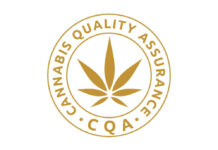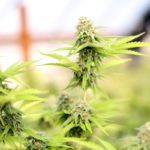Canada is just weeks away from the second wave of legalization. To become legal recreationally are edibles, topicals and extracts and together, these products are expected to attract millions of new customers as part of what’s predicted to be a multi-billion-dollar industry.
But Courtland Sandover-Sly said he sees “a lot of misconceptions” about how the rollout is going to go, such as when products will actually hit shelves.
Sandover-Sly – a partner with Groundwork Consulting and president of the BC Independent Cannabis Association – guessed products won’t be on shelves until mid-January 2020.
“The new product notifications to Health Canada require a 60-day waiting period. So Oct. 17 comes, let’s say these companies, all these larger corporate publicly traded companies apply to sell their products on October 18. Well add two months for that just for the product to be approved and be available to be on the marketplace and it’s going to be at least December or January before anything is available,” he said.
“That’s assuming the application doesn’t hit any speed bumps.”
Sandover-Sly said established companies will likely be the first on the ground with products, having a “leg up,” so to speak.
“But I certainly think that there won’t be a wave of potential new applicants and new builds. I think a lot of people would love to own a cannabis bakery or candy processing facility. And so there’ll be a lot of interest in initial inquiries, but there won’t be a way in because of the conditions in place: Building and applying for a license, starting a $5 million bakery, you’ve got to build the $5 million bakery and then get licensed. It’s still real work exactly like cultivation. Those stipulations are definitely not incentives.”
Sandover-Sly guessed that six months to a year after Oct. 17, 2019 there may be only a handful of products available in the legal market, and that it would take about five years to get a really good offering of edible products on shelves.
“Especially with the condition was that the Canadian Food Inspection Agency imposes on all publicly available food Goods. There’s a lot to navigate there. That’s a whole new can of worms. I don’t think anybody’s really delved into that in terms of media and talking about that whole their layer.“
Online, the second wave of products to be legalized are the ones “blowing off the shelves,” said Andrew Gordon of cannabis retailer Kiaro.
“These are what consumers expect to see when they walk into a retail environment,” he said. “In order for us to compete we have to be able to offer the same breadth of products that are available online.”
Gordon and Sandover-Sly both agreed that more education is crucial through the second wave of legalization.
Gordon said as a retailer, Kiaro staff will education consumer at the counter, on a variety of topics, not the least of which is responsible consumption and dosing.
”You look at anyone that’s shared feedback on a bad experience back in the day with edibles. and they never touched it again,“ he said. “As retailers, we are really going to work to help not only educate on best practices and responsible consumption, but really work to destigmatize and normalize and contextualize these products into effective lifestyle integration solution scenarios so that people can make a responsible choice, they can use less because it’s a concentrated product, get potentially more value out of it as well and have a positive experience. The only way we’re going to convert new consumers is if they have a positive experience.”
But, he said, that education needs to come from all stakeholders, including government.
While government tends to take a punitive approach in its cannabis education efforts – focusing on impaired driving, and other safety issues – retailers must focus on positive messaging, said Gordon.
“I understand the government has to take a public health and safety approach, and a lot of that’s around what not to do, but we’re going to promote what you can do and why there is benefit and how you can transition out of more toxic elements like alcohol into something more benign and beneficial like cannabis: Sharing the research and information, creating a community of support around people, so they feel empowered to go out and advance this message in a credible and authentic way. We really need to give them these resources and information,” he said, noting it’s difficult as retailers to to get this information out there given the promotion restrictions they must abide by.
READ ALSO: CANNABIS EDIBLES: The dosage debate
Jenna Valleriani, CEO of NICHE Canada, said what’s missing in the country so far is “a conversation and education around what standard dose looks like.”
“Similar to when (the first wave of) legalization was enacted last year, there’s a lot of public education and a lot of catching up to do for the Canadian public,” she told BotaniQ Magazine.
Valleriana – who also works with Hope for Health, the first registered charity focused on compassionate access to medical cannabis for Canadians – said she understands the 10 mg THC cap the government has said for edible cannabis products.
“That’s probably leaning on other jurisdictions that have legalized cannabis, mostly Colorado,” Valleriani mused. “In Colorado they actually consider the 10 mg limit a standard dose which I think is very high. I think there needs to be a more clear conversation between the standard dose versus the maximum amount of THC allowed in packaging. I think that really could be a powerful educational tool.”
Valleriani said there “could be a way to find an in between among the dissatisfaction among the industry and then the concern from the public health side, about accidental ingestion or over-consumption.”
She noted she’s seen complaints on social media about 10mg being far too low, and that many people report that their standard dose is far higher.
“If we had more clear education around what a standard dose looks like then perhaps there could be an argument to allow for more than 10 mg of THC in a package because then folks could understand, just like when you buy a case of 24 beers, you understand that’s 24 doses. A similar way of understanding and interpreting, using similar kinds of systems that we already use to moderate or influence our consumption use.”
But, Valleriani said, it “has a lot to do with peoples’ experience.” “I think we have to remember that public policy is made for the majority and the majority of individuals in Canada are inexperienced with these kinds of products. It’s hard to hear folks tell us that they can have 25mg a dose or 100mg a dose and they don’t get affected, because that’s really the exception to the role.”
Further, Valleriani said she was disappointed not to see “any medical carve out, or a different class of products allowed for medical users.”
That is an area of the second wave of legalization that is going to be challenged in court.
Well-known cannabis lawyer John Conroy has already spoken out about his intention to launch a court challenge against the new 10-mg per-package THC limit set out for edibles, extracts and topicals.
In an interview with the Georgia Straight, Conroy said the limits are far below what some medical cannabis users require.
“You’ve got kids with significant medical issues whose parents have got them medically approved for high-end concentrate extracts—and they still won’t be able to get them legally,” Conroy said. “So the government is once again failing to prevent the violation of the constitutional rights of medically approved patients,” Conroy told the Straight.
Click here to read more on that story.
Sarah Leamon, a Vancouver-based lawyer, said Conroy’s challenge “needs to happen,” agreeing that the THC limits for medical users are far too low.
“Medicinal users tend to be the bulk of the conversations that we’re having when it comes to various Charter challenges and things like that,” Leamon told BotaniQ Magazine. “It’s just going to be enormously expensive and cumbersome for people who need a much higher dosage in order to treat their symptoms. So, I think that that’s really, really problematic.”
The recreational side of things, she noted, are “a little more tenuous.”
“I think that edibles are going to be a learning curve for the public as well as the government because they’re a completely different animal in a lot of ways,” she said. “I think that the government would be well-advised to put the money into educating people about edibles and how to properly use them, and safely use them, because it is a completely different thing than the cannabis flower. There’s a huge delay, you have to know your dosage. So a part of me understands the rationale of putting a very low THC concentration in a package but that being said, I don’t think the answer is limiting the THC concentration in any given package, I think the answer is educating the public to make sure people have safe, legal, reliable options available to them no matter what their dosage is.”
Leamon also pointed to a plethora of restrictions that producers face, and how that could impact product availability, versus products already available in the illegal market today.
“The restrictions around it what they can and can’t make, how it can look, of course all in the interest of protecting children from the possibility of ingesting an edible. But it is quite constrictive. It’s going to be difficult for the government to weed out the black market when they made it so constrictive in terms of what’s available, legally, with respect to edibles. I think that’s going to be a big challenge for them – striking the right balance between protecting the public and actually just taking a really practical approach to what they should be properly providing to people.”
Cost and packaging is another big issue, she said.
“It’s so wasteful. It’s contributing to waste – especially when the government has pro-green, pro-planet, anti-waste, stewardship goals. I think that needs to be re-examined,” she said.
Driving offences are another issue that come into play. Although, Leamon noted, officers in B.C. aren’t charging when it comes to cannabis-impaired driving under the Criminal Code.
“I think there’s a number of reasons for that,” she said. “Here in B.C. we’ve had the administrative program that kind of took over the impaired driving side of things, for the better part of a decade now. So I think that a lot of officers are kind of unfamiliar with making use of the Criminal Code which might be one big prohibiting factor for them in terms of now getting up to speed with cannabis impaired driving which is of course a little bit more daunting in terms of what they need to do with the roadside.”
And, technology is not up to par, she said.
“I’m not aware of any instances in this province where officers have made use of any type of oral saliva testing equipment. I just haven’t seen it – maybe it’s happened, but I don’t think so. I’d put quite a good monetary bet on that. So I think that we’re still having a lot of problems when it comes to actually properly detecting and enforcing the laws, but that being said the laws are not good laws. The THC limits are a big, big problem because of course people who are not actually impaired but have THC in their body could be rendered a criminal the way the law is written, which is a horrifying thought.”
And, she doesn’t predict a massive uptick in saliva testing, even as edibles are legalized.
“I think the VPD for instance is waiting to see what happens when the devices are challenged in court because they’re really expensive devices, like the Draeger (Drug Test 5000) cost around $6,000 just for one machine and they need more than one. They need thousands. So for them to invest all of that money as a municipal detachment and then be told six months or six years down the road, ‘Actually, guys, you can’t use these anymore because the courts have found them to be contrary to human Charter rights, then they just have a really, really expensive broom closet full of equipment,” she said.
“I think a lot of them are thinking about waiting to see what happens with the challenges because these devices will inevitably be challenged. Once they start being used, the first lawyer who gets a client who has that device being used should be and will be filing a challenge to it. I’m surprised it hasn’t happened already. It’s going slow, very slow.”



















